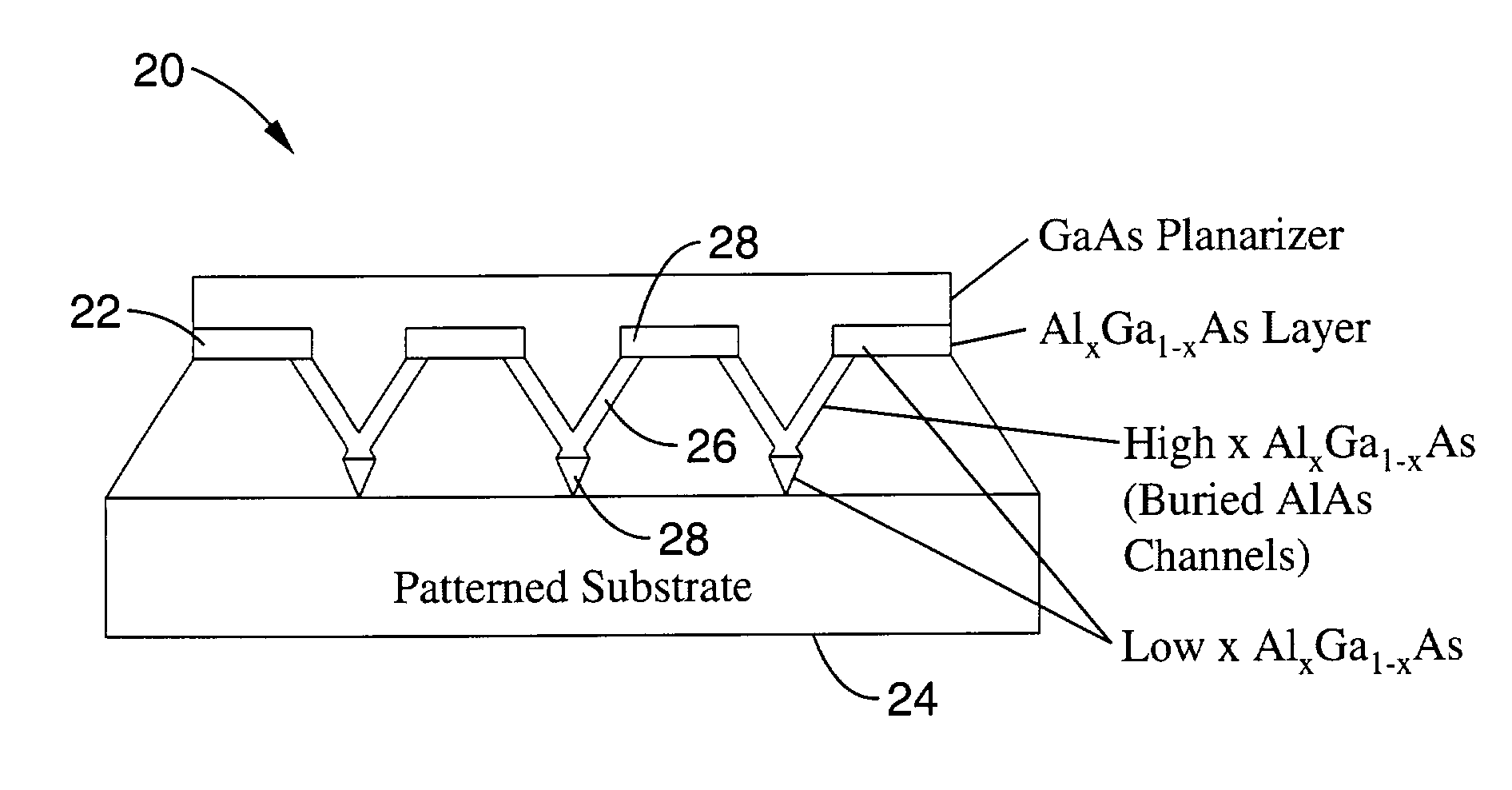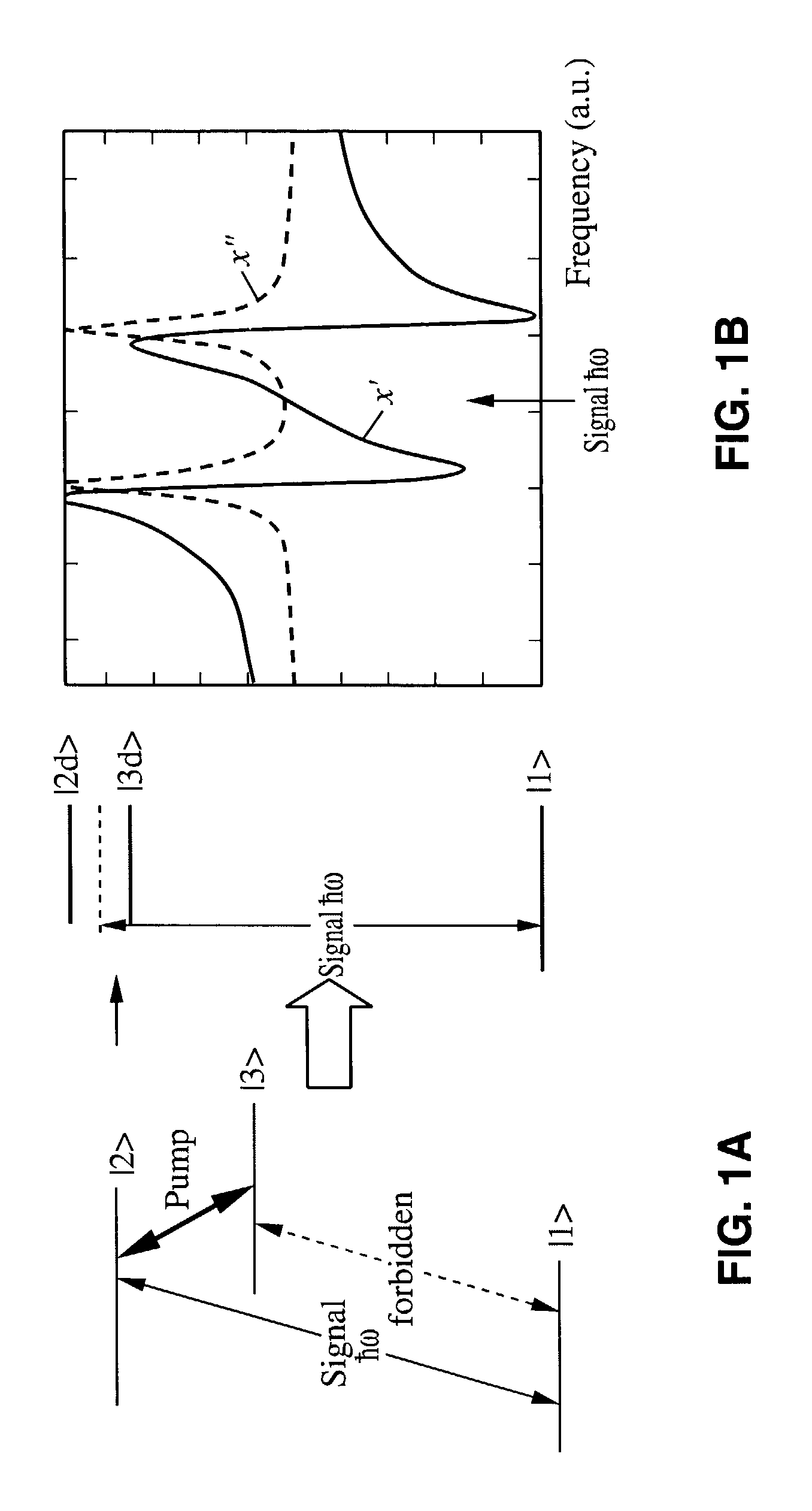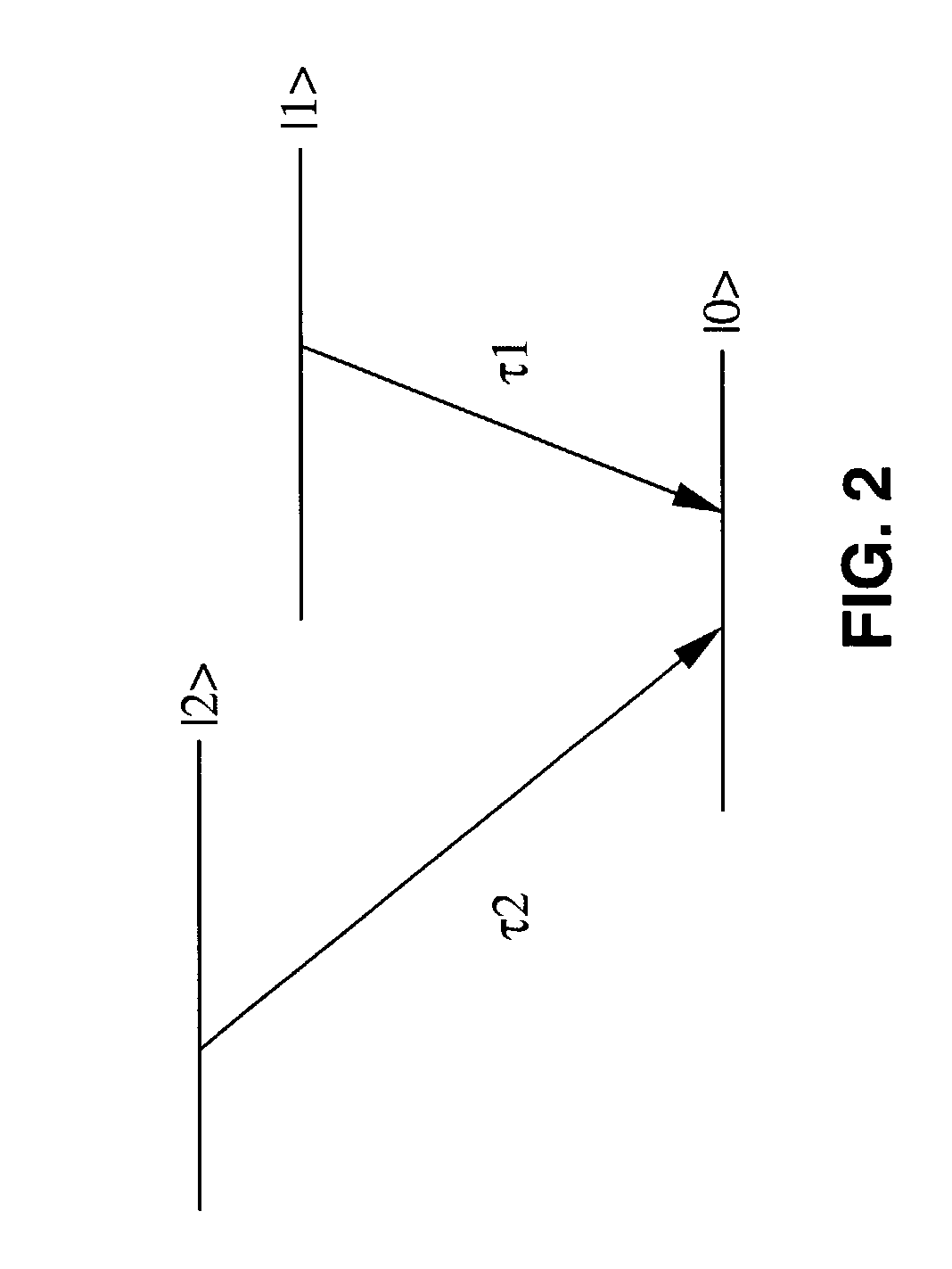Variable semiconductor all-optical buffer using slow light based on electromagnetically induced transparency
a technology of electromagnetic induced transparency and variable length buffer, applied in the field of optical communication, can solve the problems of inability to remove packets from delay lines before that time interval, and the type of buffer has very limited applications, and the implementation of variable length buffers with delay lines
- Summary
- Abstract
- Description
- Claims
- Application Information
AI Technical Summary
Problems solved by technology
Method used
Image
Examples
Embodiment Construction
[0187] In this example, disk-shaped QDs are used. .vertline.1> is chosen to be the hole level in the valence band; .vertline.2> and .vertline.3> are chosen to be the electronic levels in the conduction band. In our calculations, .omega..sub.S=1.55 .mu.m, .delta.=0, .vertline..mu..sub.32.vertline. / e=25 .ANG., .vertline..mu..sub.21.vertlin-e. / e=15 .xi..ANG. where e and .xi. are electron charge and excitonic enhancement factor due to the confinement of electrons and holes inside the QD, respectively. Ten vertically-stacked QD layers with 8 nm diameter, 10 nm height, and surface density of 4.times.10.sup.10 / cm.sup.2 are used. FIG. 13 shows the slow-down factor S and the loss .alpha. experienced by the signal light under different pump power intensity. The group velocity slow-down factor (left axis) and the corresponding absorption coefficient (right axis) are plotted as a function of the pump power density. Three different linewidth regimes are compared. Case A, B, C corresponds to 1 .m...
PUM
 Login to View More
Login to View More Abstract
Description
Claims
Application Information
 Login to View More
Login to View More - R&D
- Intellectual Property
- Life Sciences
- Materials
- Tech Scout
- Unparalleled Data Quality
- Higher Quality Content
- 60% Fewer Hallucinations
Browse by: Latest US Patents, China's latest patents, Technical Efficacy Thesaurus, Application Domain, Technology Topic, Popular Technical Reports.
© 2025 PatSnap. All rights reserved.Legal|Privacy policy|Modern Slavery Act Transparency Statement|Sitemap|About US| Contact US: help@patsnap.com



